- January 29, 2023 -
By Lisa Murray-Roselli
The ocean floor is chockablock with shipwrecks. The hunt for these vessels can consume decades of an individual’s or organization’s time and the cost of searching is enormous: boats, submersibles, personnel, equipment, and research are just some of the expenses incurred during underwater exploration. And the worst part is, it may all be for naught. It takes a special kind of motivation, or obsession, to maintain the will and the means to keep searching for something that may never be found.
No other shipwreck disrupted the economic stability of an entire nation as did the sinking of the SS Central America. In August of 1857, cargo including over $1.6 million in gold left San Francisco on its way to New York. Loaded onto the SS Sonora were thousands of newly-minted 1857-S Double Eagle gold coins from the San Francisco Mint, some older $20 gold coins, gold ingots, and gold in other forms (much of this from the bounty of the gold rush era).
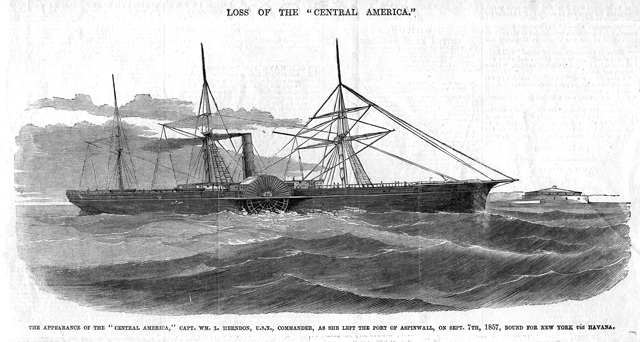
The SS Sonora sailed to Panama City without incident where the cargo was loaded onto a train and transported to Aspinwall (now Colón), Panama, then transferred onto the SS Central America. On its voyage to New York, the ship encountered a violent hurricane. Three days into their battle with the storm, the ship was hit by a powerful wave, which shattered and capsized the vessel. It sank 8000 feet below the surface, approximately 160 miles offshore of Charleston, South Carolina, along with 425 passengers and crew, including the captain, and all of that gold, which today would be worth about $300 million. This massive loss of gold dealt a tremendous blow to people’s confidence in the health and stability of the economy throughout the United States, contributing to the Panic of 1857, and a global economic crisis.
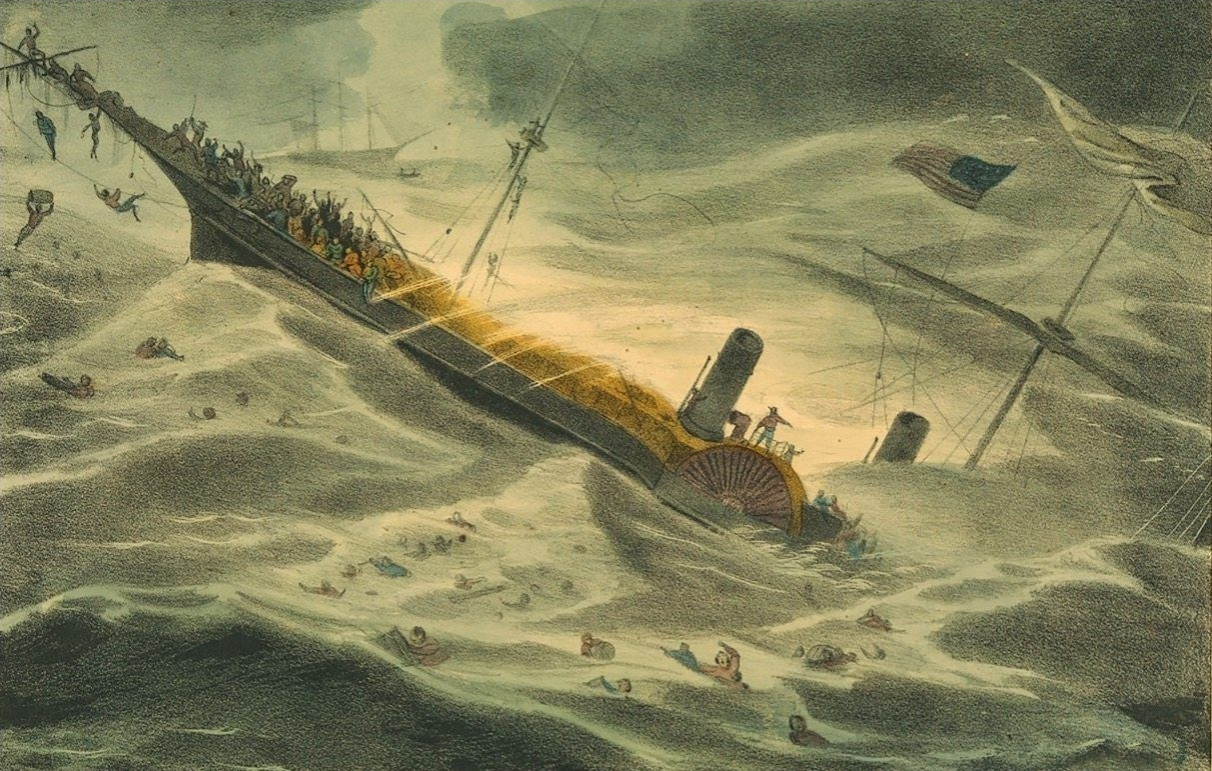
A depiction of the sinking of the SS Central America
In 1988, “The Ship of Gold,” as it came to be known, was discovered by deep sea explorer Tommy Thompson, who recovered 7,000 gold coins. After ignoring several legal requests for an inventory of the find and missing a court date in 2012, Thompson was placed in federal prison in 2015. He remains in prison as of this writing. California Gold Marketing Group (CGMG) is the owner of the second round of treasure recovered from the shipwreck in 2014.
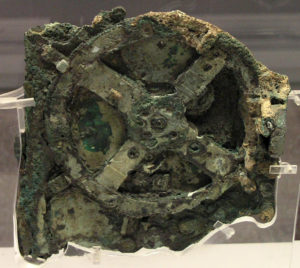
The Antikythera mechanism
Occasionally, a shipwreck’s treasure contains objects more valuable than gold, silver, or gems. Such is the case with the Antikythera, a Greek merchant ship from the 1st century BCE, which sank off the coast of Crete. It was first discovered by Greek sponge divers in 1900. In addition to the coins, jewelry, statues (including 3 life-sized marble horses and a seven foot tall “colossus” statue of Herakles), pottery, glassware, and hundreds of works of art, an unassuming chunk of bronze was also brought to the surface.
This bronze artifact turned out to be the world’s first known computer: a complex set of interlocking gears that could be used to predict movements of the sun, moon, and several planets, as well as work out the timing of solar and lunar eclipses years into the future. Scientists weren’t even aware that ancient metalworkers knew how to create gears, let alone make the type of mathematical calculations necessary to predict celestial activity. The Antikythera Mechanism, as it has come to be known, predates any similar type of instrument by 1000 years. It has fascinated scientists and opened a door for historians into a whole new aspect of ancient Greek life.
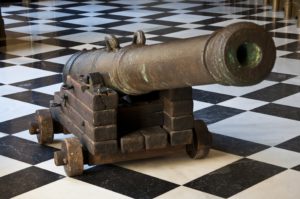
Cannon from Nuestra Señora de Atocha at the Archivo General de Indias, Seville
In September of 1622, the Tierra Firme flotilla (28 ships) left Havana, Cuba for Spain, carrying the wealth of many nations: silver from Peru and Mexico, gold and emeralds from Columbia, and pearls from Venezuela. A hurricane in the Florida straights destroyed and sank 8 of the vessels in the flotilla, including the Atocha. Of the 265 people aboard, only 5 survived.
Mel Fisher and his Treasure Salvors began searching for the Atocha in 1969. Finally, Mel’s son, Kane, happened upon a vast deposit of the ship’s treasures in 1985, which became known as “The Atocha Motherlode.” Forty tons of gold and silver, approximately seventy pounds of emeralds from the famous Muzo mine in Columbia, religious and secular jewelry, navigational instruments, military armaments, Native American objects, ceramic vessels, and even seeds and insects comprised the vast haul. The cargo’s total value is estimated to be $400 million and many of the objects are on permanent display at the Mel Fisher Maritime Museum in Key West, Florida.
Deep sea treasure hunting can be tricky business legally—“finders keepers” does not always apply. The Law of Finds asserts that a discoverer who finds a shipwreck is entitled to the full value of all of the goods recovered and has full rights to the content. However, when a government’s ship is recovered, the Law of Finds does not apply since it is generally accepted that governments never abandon the search and recovery efforts for their own vessels. Such was the case with Odyssey Marine Exploration’s (OME) discovery of the Nuestra Señora de las Mercedes, a find they attempted to keep secret by labeling it the “Black Swan Project.”
The Mercedes was sunk by the British Navy off the coast of Portugal in 1804. The OME discovered the ship in 2007 and was forced by a US federal court to reveal the ship’s origin in 2008. After a lengthy legal battle, which went all the way to the US Supreme Court, Spain prevailed and all but approximately 500,000 gold coins of the $500 million worth of treasure and artifacts were sent to Spain. The riches are on display at the National Museum of Subaquatic Archaeology in Cartagena. The museum, in cooperation with the Spanish Oceanography Institute and Spanish Navy, made further expeditions in 2015, 2016, and 2017, which yielded more treasure and artifacts.
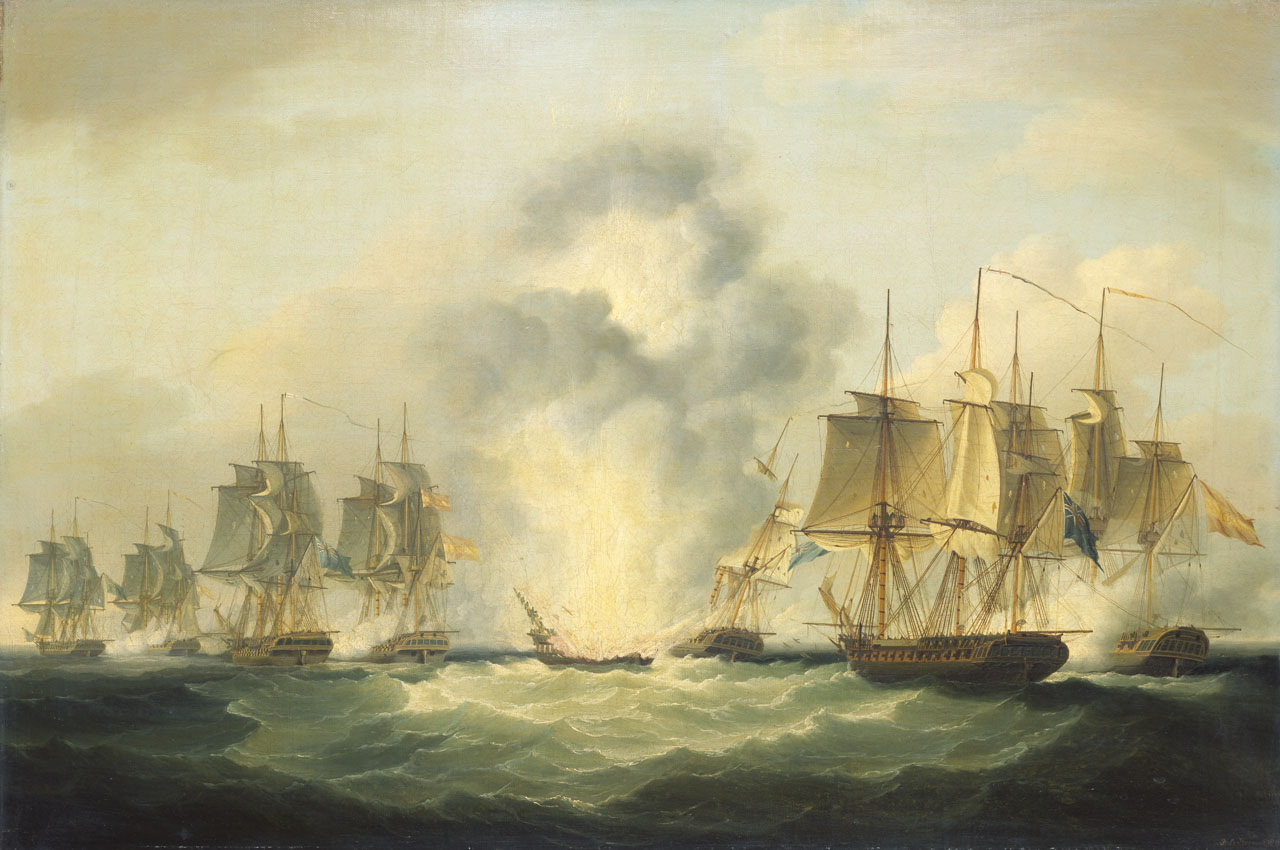
The sinking of Mercedes
Significant finds in the last couple of centuries are thrilling for reasons beyond the millions of dollars worth of treasure discovered. These ships have much to tell us about the culture and people of their time, and the prominent role shipping played in history, politics, and commerce from the 17th through the 19th centuries. Few other means of transportation are as vulnerable to the unpredictable and powerful impact of nature, which is why the deep sea is so heavily laden with the tragic yet opulent remnants of this era. You can actually own a piece of this dramatic time period as coins and other artifacts are available in the marketplace for purchase.
Order by 4:00
and it’s out the door.
1 oz. Gold or 100 oz. Silver
Trade Scrap for Bullion.
No-worry Shipments
Get paid fast!
(for qualified customers)
We don't make promises we can’t deliver on.